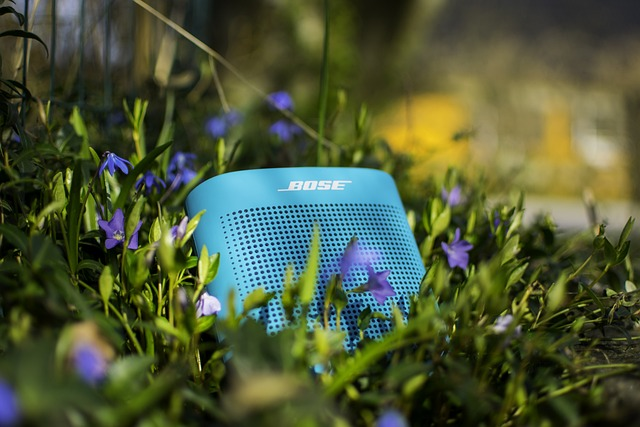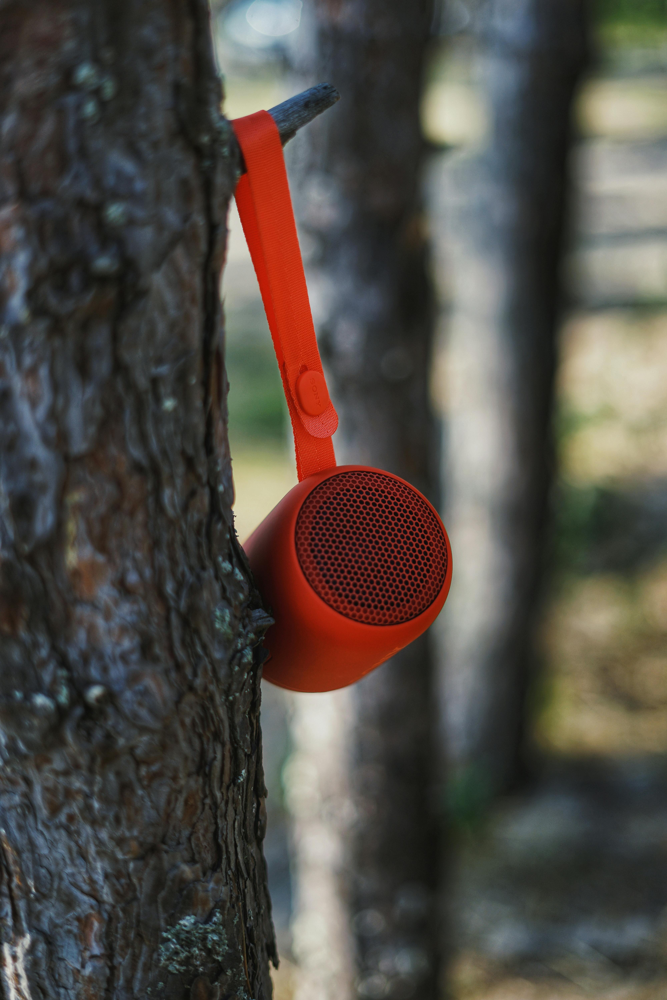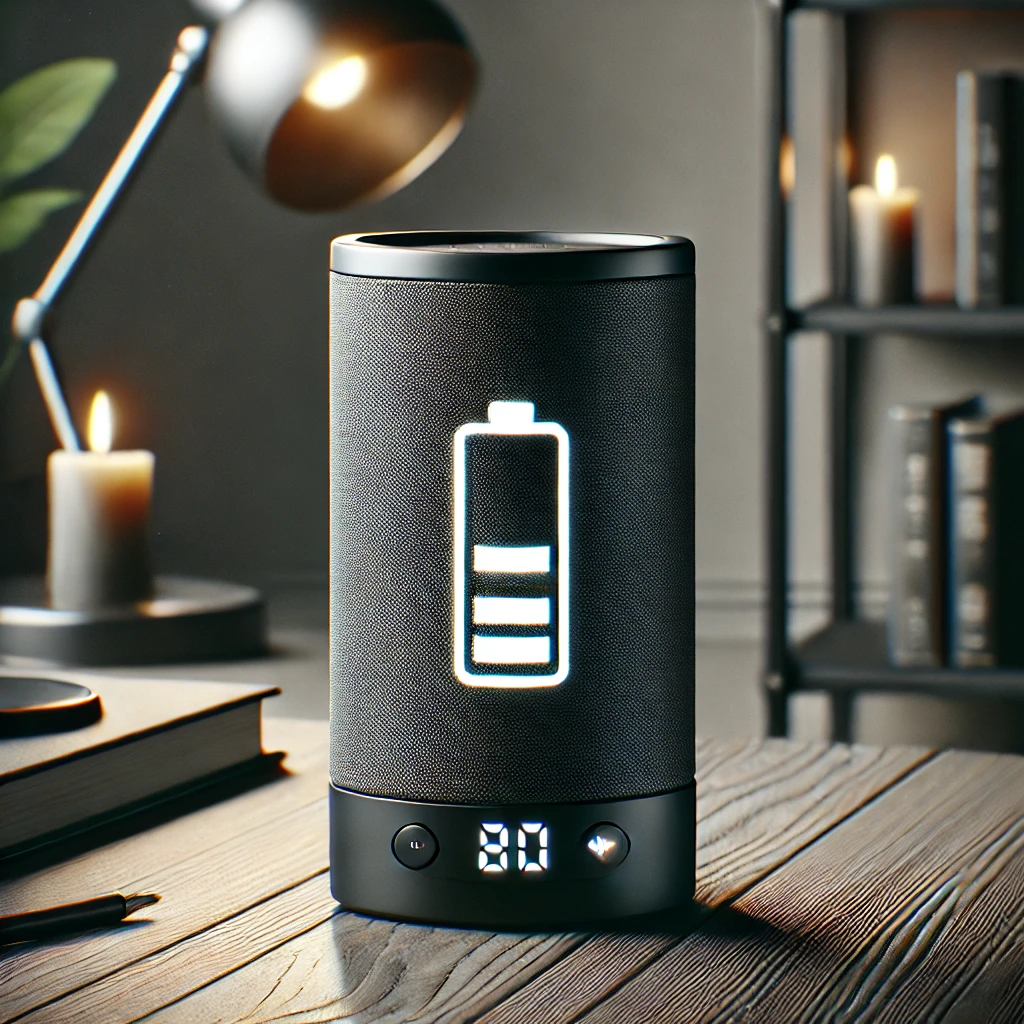If you need a Bluetooth speaker that reaches far, start by choosing models with Class 1 or Bluetooth 5.0 technology, which can achieve ranges up to 100 meters in ideal conditionsado rama.comadorama.com. Top picks include the Ultimate Ears Megaboom 3 (≈45 m rangelogitech.com) and the Tribit StormBox Flow (≈40 mtechradar.com). Ensure it has long battery life (10+ hours) and durable, water-resistant design for outdoor use.
Table of Contents
- What is a Long-Range Bluetooth Speaker?
- How Far Can Bluetooth Speakers Really Reach?
- Key Factors in Choosing a Long-Range Speaker
- Bluetooth Version & Class
- Antenna & Signal Strength
- Battery Life & Portability
- Durability & Design
- Sound Quality & Volume
- Top Long-Range Bluetooth Speaker Examples
- Comparison: Best Long-Range Bluetooth Speakers
- Tips to Extend Bluetooth Speaker Range
- FAQs
What is a Long-Range Bluetooth Speaker?
A long-range Bluetooth speaker is simply a wireless speaker designed to maintain a strong, clear connection at greater distances than typical models. While most Bluetooth devices are Class 2 (≈10 m range), long-range speakers use higher-power radios or newer standards (like Bluetooth 5.0) to push that distance. In open-air tests, Class 1 Bluetooth can cover 100 m (330 ft)adorama.com, but practical range is often shorter due to obstacles. Long-range speakers aim for robust connectivity across a yard, park, or large room.
Long-range models often belong to categories like outdoor party speakers or portable travel speakers, where you need to move far from your audio source. Examples include rugged IP-rated units (for pool parties or camping) and bigger boombox-style speakers with extra power. As a rule of thumb, if a speaker advertises “extended range” or is Bluetooth 5.0-enabled, it’s built for distance.
Key difference: a standard speaker might drop out at ~10–15 m indoors, but a long-range speaker can push well beyond that. For example, the UE Wonderboom 4 is rated for ~40 m (131 ft)techradar.com, and the UE Megaboom 3 up to 45 mlogitech.com, far more than a typical unit. These utilize stronger radios and sometimes even mesh speaker pairing to maintain connection over long distances.

How Far Can Bluetooth Speakers Really Reach?
Bluetooth range depends on class and environment. Consumer devices are usually Class 2, with official range ≈33 ft (10 m)adorama.com. However, manufacturers often exceed that in practice. The Bluetooth 5.0 standard (Class 2) theoretically boosts range to ~800 ft (244 m) under ideal conditionsadorama.com. In reality, though, factors like walls, interference and device antennas limit this.
- Line-of-sight outdoors: If nothing blocks signal, you might approach the theoretical max. Class 1 devices (100 mW) can reach 100+ madorama.com, and some labs show even more in open fields.
- Indoors or obstacles: Bluetooth can fall to ~10–20 m or less if walls and objects are in the way. Materials like concrete or metal disrupt signals.
- Newer Bluetooth versions: Bluetooth 5.x can use lower frequency modes for range, so the same device might reach farther if it’s updated.
In short, expect about 30–50 ft (10–15 m) through typical home walls, but up to 100 ft (30 m) or more in an open line-of-sight test with a strong speakeradorama.comadorama.com. Always check the spec: many modern “long-range” speakers quote ~100–150 ft (~30–45 m) connectivity. Keep in mind that stated range is often a best-case number.
Key Factors in Choosing a Long-Range Speaker
When shopping for a long-range Bluetooth speaker, focus on these criteria:
- Bluetooth Version & Class: Look for Bluetooth 5.0 or higher. Devices using Bluetooth 5.0 (LE or LE Audio) often have extra range modes. Also ask if it’s Class 1 (rare in consumer gear) for maximum poweradorama.com.
- Antenna & Design: Internal antennas and housing matter. Speakers with detachable antennas or large form factors (aerial space) can sustain distance better.
- Battery Life: If you’re using it far from a power source (like camping), longer battery life is crucial. A speaker with 10–20 hours lets you roam farther without recharging.
- Durability: Outdoor speakers should be rugged. Waterproof (IP67/IPX7), shockproof builds let you take the speaker where you need it (even hundreds of feet away by the pool).
- Sound & Power: More powerful speakers tend to have better connectivity hardware. A loud outdoor party speaker usually has both volume and range, so you hear well even at distance.
- Multi-Speaker Pairing: Some systems (Bose, JBL) allow linking multiple speakers. With two paired units, you can place one farther and still maintain sync via the master.
Bluetooth Version & Class
Bluetooth “class” indicates transmit power:
- Class 1: ~100 mW, ~100 m range (theoretically)adorama.com. Rare in portable speakers; more common in industrial gear.
- Class 2: ~2.5 mW, ~10 m (33 ft) standard rangeadorama.com, but often reaches ~30 m in practice.
- Bluetooth 5.0+: Increases range (often ~4× over older techadorama.com). New speakers with BT 5.x or later will generally outperform older Bluetooth 4.x models at distance.
Always check specifications or product reviews for range. For example, Ultimate Ears’s technical sheets cite Megaboom 3 at “mobile range up to 45 m”logitech.com. Newer JBL or Bose models may not always publish the number, but user reviews can give clues on performance.
Antenna & Signal Strength
Quality antennas and RF circuitry boost range. Some speakers have external antennas or specialized chipsets (aptX, BT LE) to improve connectivity. In general, larger portable speakers have room inside for a better antenna than tiny pocket speakers.
The placement of your phone or source also matters: keep it free of obstructions. If you plan to walk away from the speaker, mount the speaker on a high surface or turn it so the sound/antenna faces you for best reception.

Battery Life & Portability
Long-range often implies outdoor/remote use, so battery life is key. A short battery means you’ll have to recharge before making full use of the distance capability. Look for speakers with at least 10–12 hours (many list 20–30 hours as selling point). Also consider weight: heavy party speakers might have range but be hard to carry.
For example, the Tribit StormBox Flow boasts a 30-hour batterytechradar.com. Its long life complements its 40 m range, making it ideal for all-day outdoor gatherings. A lighter speaker might be more portable but often has less range or battery life.
Durability & Design
Outdoor use demands an IP rating (resistance to dust/water). An IP67 or IPX7 speaker can be submerged or dropped, meaning you can leave it far away (like by a pool or on a boat) without worry.
Also, rugged design can help maintain range. A tight-sealed, solid body can support the RF hardware without interference. Some outdoor speakers are even “bicycle handlebar mountable” (e.g. JBL Clip series) so you can ride far with music.
Embed a relevant image with alt text focusing on keywords here: A portable long-range Bluetooth speaker (Bose SoundLink) in an outdoor garden, illustrating a rugged design built for distance.
Sound Quality & Volume
Finally, consider audio performance. Ironically, very powerful/bass-heavy speakers (like party speakers) often also excel at connectivity, because they use beefier hardware and are meant for large venues. If you need both loud volume and range, look at mid-sized party speakers (like JBL Charge/Xtreme series or UE Boom/Megaboom).
Quiet or slim “pocket” speakers trade off range for size, so they are less ideal for long-distance playback.
Top Long-Range Bluetooth Speaker Examples
Here are some real-life examples and product types known for extended range:
- Ultimate Ears Megaboom 3: Portable 360° speaker, ~45 m rangelogitech.com. Great all-around sound and very durable (IP67).
- Ultimate Ears Wonderboom 4: Compact, outdoor-focused speaker with ~40 m rangetechradar.com. It’s waterproof and floatable, ideal for pool/picnic.
- Tribit StormBox Flow: Rugged portable speaker, ~40 m rangetechradar.com with 30h battery. Bluetooth 5.3 ensures stable signal far from your phone.
- OontZ Angle 3: Budget option, claims up to 30 m (100 ft) range with Bluetooth 5.0. IPX7 waterproof and very affordable. (Manufacturer states 100 ft rangeunwiredforsound.com.)
- Bose SoundLink Flex: Small but with a strong signal, reportedly ~10 m (30 ft) rangethetedstore.com. (More moderate range, but known for clear sound and portable size.)
- JBL PartyBox Series: Larger party speakers (e.g. PartyBox 1000) – these focus on volume and may have ~30–40 m range in open air. They often use BT and can also accept 3.5mm or wireless extenders.
- Soundcore Motion+ (by Anker): High-spec speaker; the specs on some (e.g. Motion 300) claim 100 m range (Bluetooth 5.0) – see manufacturer listing. Strong battery and sound.
Note: Some manufacturers even offer Bluetooth range extenders/transmitters, but these are separate devices you plug into your audio source to boost signal, not built into the speaker.
Comparison: Best Long-Range Bluetooth Speakers
| Model | Approx. Range | Bluetooth Version | Key Features |
|---|---|---|---|
| UE Megaboom 3 | ~45 m (147 ft)logitech.com | Bluetooth 4.2 | 360° sound, 20h battery, IP67 |
| UE Wonderboom 4 | ~40 m (131 ft)techradar.com | Bluetooth 5.2 | Compact, waterproof, floatable |
| Tribit StormBox Flow | ~40 m (131 ft)techradar.com | Bluetooth 5.3 | 30h battery, IP67, bass-heavy sound |
| OontZ Angle 3 | ~30 m (100 ft) | Bluetooth 5.0 | IPX7 waterproof, very affordable |
| Soundcore Motion X600 | ~30 m (100 ft) | Bluetooth 5.3 | Rich bass, 12h battery, aptX support |
| Bose SoundLink Flex | ~10 m (30 ft)whathifi.com | Bluetooth 4.2 | Compact, lifelike sound, 12h battery |
These examples show a range of styles. The UE and Tribit models above are especially noted for distancetechradar.comtechradar.com. Your choice depends on whether you prioritize raw range or other factors (size, price, sound).
Compare specifications and reviews to see real-world range tests. For instance, TechRadar notes the Megaboom 3 and Wonderboom 4 both reach around 40 mtechradar.com, which outperforms smaller units.
Tips to Extend Bluetooth Speaker Range
Beyond picking the right speaker, you can maximize connection in these ways:
- Maintain line of sight: Avoid walls, metal or dense materials between your phone and speaker. Outside or around corners, keep devices aligned.
- Elevate the speaker: Mount it on a high shelf or speaker stand so obstacles are minimized.
- Stay away from interference: Other 2.4 GHz devices (Wi-Fi, microwaves, routers) can cause dropouts. Move away from routers or turn Wi-Fi off if possible.
- Use wireless repeaters: For special cases, a Bluetooth range extender (transmitter/repeater) can be added to your audio source, boosting signal strength.
- Link multiple speakers: Some brands (Bose, JBL, UE) offer apps to sync two or more speakers. Spreading two speakers apart can cover more area and allow you to roam between them.
Note: If you need ultra-long range (several hundred feet), consider non-Bluetooth options (e.g., Wi-Fi-based audio systems or professional PA systems). Bluetooth is designed as a personal area network; pushing it beyond ~30–50 m is a stretch.

FAQs
Q: What counts as a long-range Bluetooth speaker?
A: There’s no strict definition, but generally any portable speaker advertised for ranges beyond the usual 10–15 m qualifies. Most “long-range” speakers in the market work reliably at 30–45 m (100–150 ft) distancetechradar.comlogitech.com, which is much farther than typical models.
Q: How far can Bluetooth speakers reach in practice?
A: Indoors, expect 10–20 m through walls on a good speaker. Outdoors (line-of-sight), advanced models can hit 40–45 m or morelogitech.comtechradar.com. The theoretical max for Bluetooth 5.0 is around 244 m, but real-world obstacles usually limit this.
Q: Does the Bluetooth version matter for range?
A: Yes. Newer Bluetooth versions (5.0 and above) offer longer range and more stable linksadorama.com. A Bluetooth 5.0 speaker can reach about four times farther than an older 4.x device under the same conditions. Also look for “Class 1” transmitters (rare in consumer speakers) if maximum range is keyadorama.com.
Q: Can I improve speaker range myself?
A: You can try: Keep a clear line of sight, minimize interference sources, and ensure the speaker is fully charged (low battery can reduce output power). Bluetooth range extenders (USB or plug-in adapters for your phone/computer) also exist to boost transmission, but compatibility with speakers varies.
Q: Are Wi-Fi speakers better than Bluetooth for long distance?
A: Yes, generally. Wi-Fi audio (e.g. Sonos, Google Home) uses Wi-Fi networks or mesh, offering room-to-room coverage of 30–100 m. If you need whole-home coverage, a Wi-Fi speaker or a networked audio system will outperform Bluetooth. Bluetooth is simpler and more portable, but has inherent range limits.
Q: What factors reduce Bluetooth range?
A: Things like walls, floors, and metal objects can cut the range by 50–90%. Interference from other devices (Wi-Fi, cordless phones) also degrades connection. At longer range, even small misalignment of devices can cause hiccups.
Q: Which speakers have the longest range?
A: Some high-end or industrial speakers (rare) claim class 1 range (~100 m). In consumer gear, models like the UE Megaboom series, Tribit StormBox, and certain Soundcore/Anker speakers are known for exceptional range (30–45 m)techradar.comlogitech.com. Always check test reviews for range specifics.
Q: How to test a speaker’s range?
A: Move your paired device away slowly (indoors and outdoors) until the music cuts out or distorts. Measure the distance at which audio drops. Do this in an open area for best results. Testing both directions (moving the phone and moving the speaker) can show differences in antenna sensitivity.




One thought on “Bluetooth Speaker Buying Guide: How to Choose the Best Long-Range Speakers”